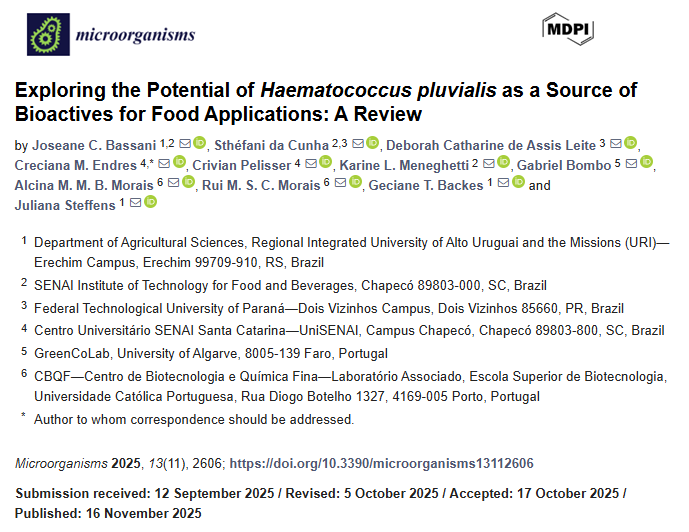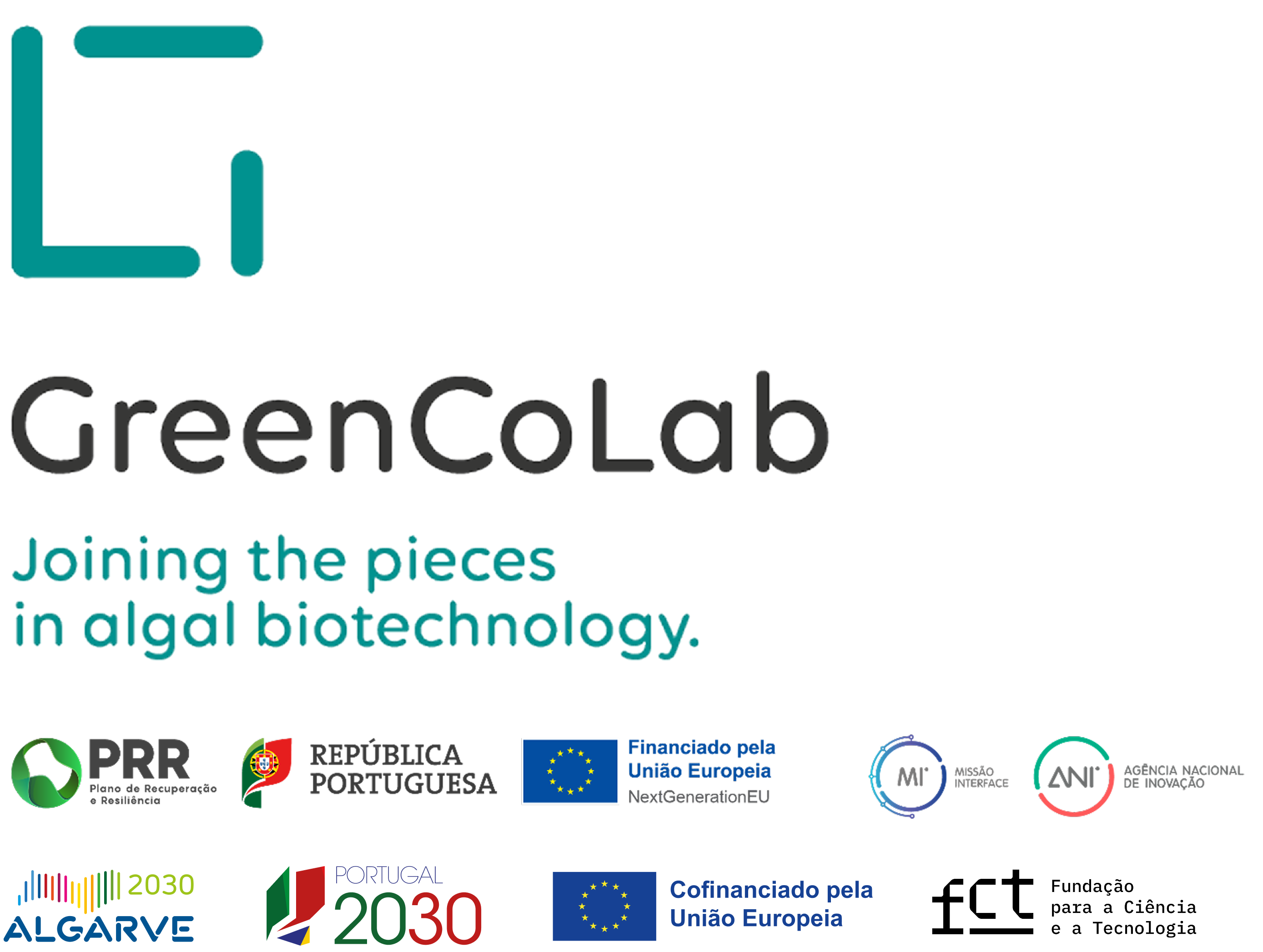

TITLE
Exploring the Potential of Haematococcus pluvialis as a Source of Bioactives for Food Applications: A Review
JOURNAL
Microorganisms
AUTHORS
Joseane C. Bassani, Sthéfani da Cunha, Deborah Catharine de Assis Leite, Creciana M. Endres, Crivian Pelisser, Karine L. Meneghetti, Gabriel Bombo, Alcina M. M. B. Morais, Rui M. S. C. Morais, Geciane T. Backes, Juliana Steffens
ABSTRACT
The search for sustainable and health-promoting food ingredients has positioned microalgae as promising candidates for the development of functional products. Haematococcus pluvialis, a unicellular green microalga, is the richest natural source of astaxanthin, a carotenoid with outstanding antioxidant, anti-inflammatory, and neuroprotective properties. In addition to astaxanthin, H. pluvialis provides high-value proteins, essential fatty acids, polysaccharides, and vitamins, which expand its potential applications in the food sector. This review compiles current knowledge on the biology and physiology of H. pluvialis, with emphasis on cultivation strategies, environmental stress factors, and biotechnological tools designed to enhance bioactive compound production. Advances in extraction and purification methods are also discussed, contrasting conventional solvent-based approaches with emerging green technologies. The integration of these strategies with biomass valorization highlights opportunities for improving economic feasibility and sustainability. Applications of H. pluvialis in the food industry include its use as a functional ingredient, natural colorant, antioxidant, and stabilizer in bakery products, beverages, meat analogs, and emulsified systems. Evidence from in vitro, in vivo, and clinical studies reinforces its safety and effectiveness. Looking ahead, industrial perspectives point to the adoption of omics-based tools, metabolic engineering, and circular economy approaches as drivers to overcome current barriers of cost, stability, and regulation, opening new avenues for large-scale applications in food systems.



